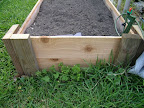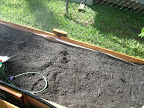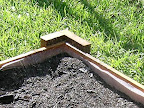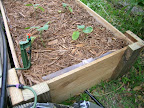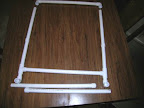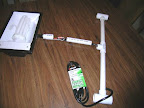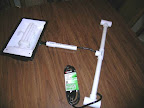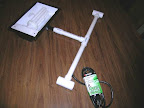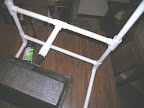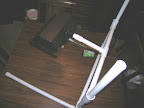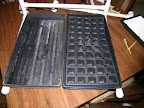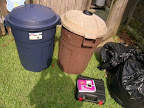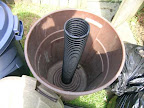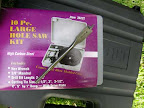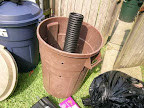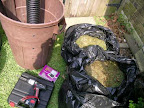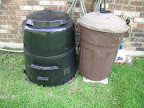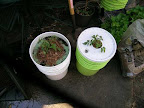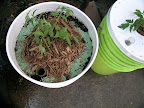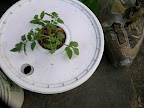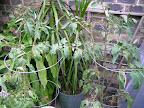Watering the plants– you gotta do it, no matter what. No water, no garden. It would be nice if rainfall was predictable and regular enough to let nature handle things, but it just ain’t always so. Garden irrigation can be a real pain– if you water manually, you can’t forget to do it, especially during the heat of summer. You don’t want to under or over-water, and different plants have different requirements in order to do their best. One solution is to set up a low-volume or “drip” irrigation system. Using low-pressure tubing and dripper or sprayer heads, you can tailor your system to serve a variety of plants. Plants that need more can be supplied by adjustable drippers or spray heads; plants that need less can be supplied by fixed drippers that supply as little as one gallon per hour.
I found a lot of cool stuff by a manufacturer called Mr. Landscaper© that covers so many bases in low-volume irrigation, it’s hard to fathom what else you could possibly need to handle your garden and plant watering needs.
I did find one thing, however, and it really completes the whole setup. It’s the Orbit Sunmate Automatic Yard Watering System©. Although it’s aimed at high-volume lawn use, it’s wide range of operating pressures– from 10 to 80psi– allows its adaptation to low-volume irrigation quite nicely.The starter kit consists of 4 pieces: a digital multi-station, multi-cycle timer/controller, two electronic station valves, and a 4-outlet brass manifold. Mounting hardware is also supplied. It sells for around $40, which is a great deal, considering the manifold itself costs about $14 if you bought it separately. The controller can run a total of four valves, of which extras can be had for around $15. As a bonus, the controller and valves carry a six-year warranty.
You start by programming the watering duration of each valve or “station”. Additionally, up to four “on” times or “cycles” can be set. Although you can’t stagger the cycles of individual stations, the wide range of watering durations allows the amount of water to each type of outlet to be determined. For example, even though your drippers and sprayers will come on at the same time(s) each day, the drippers connected to one station could be set to run for up to 99 minutes while, at the same time, the sprayers connected to another station could be set to run as little as 1 minute. This allows for a great deal of flexibility.
My current setup features one station which controls the outlets on a length of 1/2″ drip irrigation pipe. A combination of high-flow drippers and spray heads run for 90 minutes twice a day on a raised bed garden containing squash, tomatoes, basil, eggplant, peppers and ginger. Incoming water pressure on this station is controlled by a 25psi regulator in order to prevent the 1/4″ spaghetti lines from blowing off the connectors.
A second station’s outlet is fitted with a reducer/restrictor to feed a long length of 1/4″ spaghetti hose which branches out at its end to a number of 1gph drippers that are mounted on standard 10×20″ seedling trays. This station runs for 7 minutes at a time twice a day– enough to keep about 1/2″ of water on the bottoms of the trays most of the time, even on 90°-plus days. Pots in the trays soak up the water from below as needed. This works great for a variety of uses, including outdoor germination and growing starts until they are ready to be transplanted into the garden. Certainly some herbs could even be left to term in this setup.
I’ve recently purchased two additional station valves to max out the system, and am looking forward to an excuse to utilize them in the near future.
The Orbit system (#62032) and extra valves (#62035) are available at The Home Depot; a full range of Mr. Landscaper products are featured at Lowe’s.

